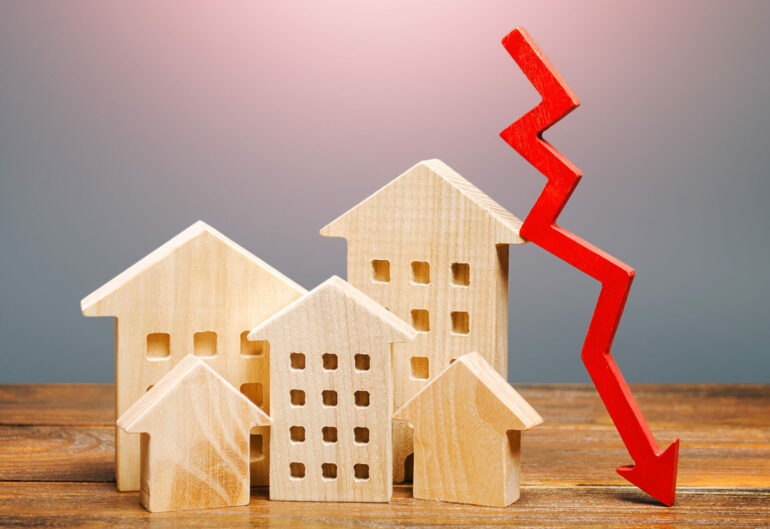Average new seller asking prices dropped by 1.2% this July, down £4,531 to £373,709, research from Rightmove found.
This was the biggest July fall Rightmove recorded in over 20 years.
The report found high housing supply and the start of summer holidays weighed on prices.
Rightmove said sellers needed to price keenly to get buyers’ attention, as overpricing risked homes being overlooked.
The firm revised its 2025 price forecast from 4% to 2%.
Rightmove said mortgage rates were falling and predicted two more Bank Rate cuts in 2025 would help the market.
Colleen Babcock, property expert at Rightmove, said: “We’re seeing an interesting dynamic between pricing and activity levels right now.
“The healthy and improving level of property sales being agreed shows us that there are motivated buyers out there who are willing to finalise a deal for the right property.
“What’s most important to remember in this market is that the price is key to selling.”
Babcock added: “The decade-high level of buyer choice means that discerning buyers can quickly spot when a home looks over-priced compared to the many others that may be available in their area.
“It appears that more new sellers are conscious of this and are responding to this high-supply market with stand-out pricing to entice buyers and get their home sold.”
Additionally, the report showed price trends varied by region; London saw the biggest drop at -1.5%, especially in Inner London.
Rightmove said Stamp Duty changes in April hit London harder as prices are higher, and rule changes for non-domiciled buyers added to uncertainty.
In contrast, the North East, Britain’s least expensive region, saw prices climb 1.2%, continuing a trend of stronger growth in cheaper regions.
The number of sales agreed was up 5% on last year and was at its highest since 2021 for July.
Buyer enquiries to estate agents were up 6%.
Improved affordability was noted, with the average asking price just 0.1% above a year ago, while average wages were up over 5%.
The Rightmove Mortgage Tracker put the average 2-year fixed mortgage at 4.53%, down from 5.34% a year ago.
For a typical buyer, this means saving nearly £150 a month on a new mortgage with a 20% deposit, compared with last year.
Rightmove said it expects the average asking price to rise 2% in 2025, not 4%.
The company kept its transaction forecast at 1.15 million for 2025.
Babcock said: “It’s been a promising first half of the year for activity levels, particularly when you consider that some will have brought their plans forward to try to avoid added stamp duty from April.
“Even after the stamp duty deadline, we’re seeing more sales being agreed and more new potential buyers entering the market than at the same time last year.
“Still, the knock-on effect of high buyer choice is slower price growth, so we’re revising down our prediction of how much the asking price of a home will increase over the whole of the year.”
She added: “Looking ahead to the second half of 2025, there will still very likely be the usual quieter seasonal periods around the summer holidays and Christmas, but we expect market activity to continue to be resilient.
“Crucially, buyer affordability is heading in the right direction, and another two Bank Rate cuts before 2026 would be a big boost to this.”
Nathan Emerson, CEO of Propertymark, said: “The housing market is witnessing a steady return to normality following Stamp Duty threshold changes for those living in England and Northern Ireland at the start of April.
“As we enter the summer months, when the housing market tends to achieve a peak in sales activity, it is good to see yet further resilience in house prices year on year.
“We have seen encouraging signs from Rachel Reeves’ Leeds Reforms which are designed to potentially better help lenders serve those on lower incomes.
“However, such reforms alone will not help keep house prices manageable without the UK Government and the devolved administrations meeting their individual housing targets to keep pace with real world demand.”




